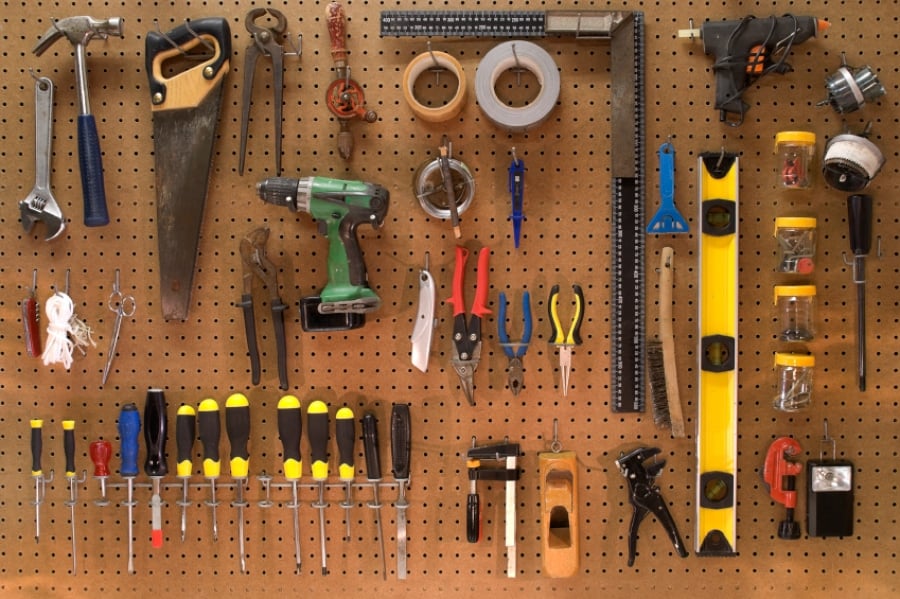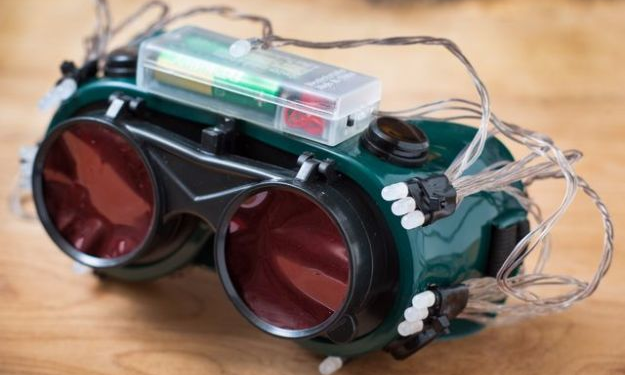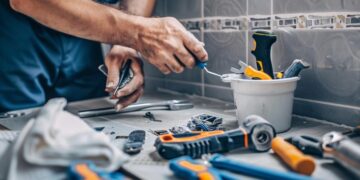Top DIY Repair Tools takes center stage in every DIY enthusiast’s toolkit, offering a comprehensive guide to the essential equipment needed for successful home repairs. From power tools to specialty items, this topic explores the key tools that can save you time, money, and effort in your repair projects.
When it comes to tackling DIY repairs around the house, having the right tools can make all the difference. Investing in a few essential tools can not only save you money on repairs but also empower you to take on a wide range of projects with confidence.
Top 5 Must-Have DIY Repair Tools:
- Screwdriver Set: A good quality screwdriver set is essential for almost any DIY project. Whether you’re tightening a loose screw or assembling furniture, having a variety of screwdrivers in different sizes and types can be a lifesaver. Brands like Stanley, Craftsman, and Wiha are highly recommended for their durability and versatility.
- Hammer: A sturdy hammer is a versatile tool that can be used for a wide range of tasks, from hanging pictures to knocking down walls. Opt for a hammer with a comfortable grip and a claw for pulling out nails. Estwing, Stanley, and Vaughan are reputable brands known for their quality hammers.
- Tape Measure: Accurate measurements are crucial for any DIY project, making a tape measure a must-have tool. Look for a tape measure with a locking mechanism and a durable case. Brands like Stanley, Milwaukee, and Komelon are known for their reliable tape measures.
- Adjustable Wrench: An adjustable wrench, also known as a crescent wrench, is essential for tightening or loosening nuts and bolts of various sizes. Investing in a high-quality adjustable wrench from brands like Channellock, Crescent, or Klein Tools will ensure that you have a tool that lasts for years to come.
- Cordless Drill: A cordless drill is a versatile tool that can be used for drilling holes, driving screws, and even mixing paint. Look for a drill with multiple speed settings, a comfortable grip, and a long battery life. Brands like DeWalt, Makita, and Bosch are known for their reliable cordless drills.
Power Tools for DIY Repairs

When it comes to DIY repairs, having the right power tools can make a significant difference in the efficiency and quality of your projects. Power tools are essential for various repair tasks, from woodworking to plumbing, electrical work, and more. In this section, we will explore the key power tools necessary for DIY repairs, the difference between corded and cordless power tools, safety tips when using power tools, and the versatility of power tools in DIY repair tasks.
Key Power Tools for DIY Repairs
- Cordless Drill: A versatile tool for drilling holes and driving screws into different materials.
- Electric Screwdriver: Ideal for smaller tasks and projects that require precision screw driving.
- Circular Saw: Essential for cutting wood, metal, and other materials with precision.
- Jigsaw: Perfect for cutting curves and intricate shapes in wood, plastic, and metal.
- Power Sander: Helps in smoothing surfaces and removing old finishes or paint.
Difference Between Corded and Cordless Power Tools
Corded power tools require a constant power source through a cord plugged into an outlet, providing continuous power for longer periods. On the other hand, cordless power tools are powered by rechargeable batteries, offering more mobility and flexibility. Cordless tools are convenient for working in areas without easy access to power outlets, but they may have limited run time compared to corded tools.
One of the emerging trends in the health and fitness industry is the increasing popularity of wearable fitness devices.
Safety Tips for Using Power Tools
- Always wear appropriate safety gear, including goggles, gloves, and ear protection.
- Read and follow the manufacturer’s instructions and safety guidelines for each power tool.
- Keep your work area well-lit and organized to avoid accidents and injuries.
- Avoid distractions while using power tools to maintain focus and prevent accidents.
- Unplug corded tools or remove batteries from cordless tools when not in use to prevent accidental starts.
Versatility of Power Tools in DIY Repair Tasks
Power tools offer versatility in DIY repair tasks by providing efficient ways to cut, drill, sand, and fasten materials. From basic home repairs to more complex projects, power tools can help you save time and effort while achieving professional results. With the right power tools in your toolkit, you can tackle a wide range of repair and improvement projects with confidence.
Hand Tools for Precision Work
When it comes to precision repairs, having the right hand tools is crucial for achieving accurate and detailed results. Manual hand tools provide the control and finesse needed for intricate tasks, making them indispensable in various repair projects.
Recent research on Digital Payments Future Trends indicates a shift towards contactless transactions and the adoption of blockchain technology. With the rise of e-commerce, digital wallets, and mobile payment apps, the future of payments is becoming more convenient and secure.
Essential Hand Tools for Precision Repairs
- Tweezers: Perfect for handling small components and delicate parts with precision.
- Precision Screwdrivers: Allow for precise tightening and loosening of tiny screws in electronic devices.
- Needle-nose Pliers: Ideal for gripping and bending wires in tight spaces.
- Jeweler’s Loupe: Helps magnify small details for close inspection during repairs.
Benefits of Manual Hand Tools vs. Power Tools
While power tools offer efficiency and speed in many repair tasks, manual hand tools excel in precision work due to their control and tactile feedback. When working on delicate components or intricate designs, manual hand tools allow for greater accuracy and attention to detail compared to power tools.
Tips for Maintaining and Storing Hand Tools
- Keep hand tools clean and dry after each use to prevent rust and corrosion.
- Store hand tools in a designated toolbox or organizer to prevent damage and loss.
- Regularly inspect hand tools for signs of wear and tear, and replace any damaged tools to maintain precision in repairs.
Specialty Tools for DIY Enthusiasts
When it comes to DIY repair projects, having the right tools can make all the difference. While essential hand and power tools are necessary for most tasks, there are also specialty tools that can greatly enhance the efficiency and precision of specific repair projects. Investing in these unique tools can not only simplify challenging repairs but also help you tackle tasks that would otherwise be difficult or impossible. In addition to specialized tools, there are creative ways to repurpose everyday items as DIY repair tools, making your projects more cost-effective and resourceful.
Electronic Circuit Tester
Electronic circuit testers are essential for diagnosing electrical issues in appliances, vehicles, and other electronic devices. These tools help you identify faulty components, locate short circuits, and test continuity, making them invaluable for troubleshooting electrical problems accurately and efficiently.
Pipe and Tubing Bender
For DIY enthusiasts working on plumbing projects or automotive repairs, a pipe and tubing bender is a valuable tool to have. This tool allows you to bend metal pipes and tubes with precision, creating custom shapes and angles without the need for expensive machinery or professional services.
Precision Screw Extractor Set
When dealing with stripped or damaged screws, a precision screw extractor set can save you time and frustration. These specialized tools are designed to grip onto the damaged screw and remove it without causing further damage, making them essential for delicate repair tasks that require precision and care.
Heat Gun for Paint Stripping
A heat gun is a versatile tool that can be used for various DIY projects, including paint stripping, plastic welding, and soldering. When it comes to removing paint from surfaces such as wood or metal, a heat gun can make the process quick and efficient, saving you time and effort compared to traditional methods.
Creative Repurposing of Everyday Items
In addition to specialty tools, DIY enthusiasts can also get creative with repurposing everyday items for repair projects. For example, using a butter knife as a makeshift pry bar, a credit card as a shim for leveling furniture, or a toothbrush as a cleaning tool for small crevices. Thinking outside the box and utilizing common household items can be a cost-effective and innovative approach to DIY repairs.
In conclusion, having the right tools at your disposal can make a significant difference in the outcome of your DIY repair tasks. By investing in quality equipment and following safety guidelines, you can tackle any project with confidence and precision.









